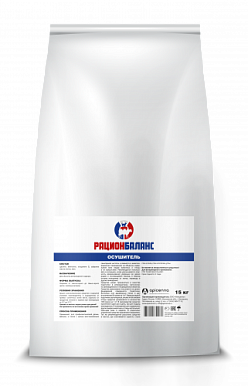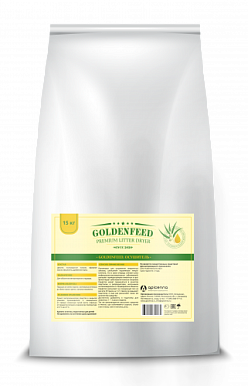When keeping animals indoors, microclimate deviations occur. The microclimate of a livestock farm is understood as a set of physical and chemical factors of the air environment, which includes humidity, temperature, chemical composition and air flow, the presence of suspended particles and pathogenic microorganisms. Microclimate is one of the key factors influencing the productivity and health of animals in livestock farming. Creating optimal conditions for keeping livestock and poultry helps to increase their productivity, improve physiological indicators, and also reduce the veterinary bills. It is very important to monitor microclimate parameters, maintain them at an optimal level, which matches zootechnical and health standards, since if these are violated, the livestock’s resistance to various diseases decreases, milk yield and egg production decrease, live weight gain decreases, and the mortality rate of young animals increases significantly, and the service life of equipment, inventory and the building itself is reduced. Let’s not forget that animals are born covered in amniotic fluid, which must be removed immediately after birth. This is especially important during cold periods of the year, since untimely removal of this fluid will lead to hypothermia of the young, which can later develop into a serious illness.
Excessive indoor humidity has a negative impact on animal health. In combination with high air temperatures, heat transfer from the body is disrupted and moisture evaporation is reduced. This leads to overheating of the body, which can result in heat stroke, as a result of which the animals' appetite, productivity and resistance to diseases decrease. Under low temperatures, animals quickly become hypothermic, which also leads to health problems in the livestock and to an increase in feed consumption, since animals require more energy to replenish heat losses. With increased humidity, water vapor condenses on surfaces: floors, walls, ceilings, metal structures, bedding and feed become wet, and liquid accumulates on the floor. Under these conditions, a favorable environment is created for the development of pathogenic microorganisms, which leads to an increase in the level of morbidity in animals: respiratory and skin diseases become more frequent, the functioning of the gastrointestinal tract is disrupted, there is an increase in hoof diseases in cattle and foot diseases in poultry.
Let's discuss the most common diseases of farm animals that occur when the microclimate, in particular humidity, is not properly maintained.
Respiratory diseases of calves
Pathologies of the respiratory tract of calves are one of the main veterinary problems at any livestock farm. These include rhinitis, laryngitis, tracheitis, bronchitis, pneumonia, pleurisy, etc. The most widespread diseases among calves are pathologies of the respiratory tract, including respiratory tract infections leading to chronic bronchopulmonary diseases of cattle. Mixed infections are always a challenge, and diagnosis takes time due to the many clinical signs of the disease. The recovery process in young animals takes a significant time. A feature of respiratory diseases is that they most often occur in the form of mixed infections. All of these diseases cause significant damage to a farm: growth rates decrease, treatment costs increase, forced culling is carried out, and some animals die.
Dermatological diseases of piglets
Skin pathologies of piglets are a common problem at pig farms. High humidity promotes the growth of bacteria and fungi on the skin of pigs, which can lead to the development of various inflammatory processes and infections. As a result, animals may experience discomfort, lose appetite and weight, and their overall health deteriorates. Along with this, an excessively humid environment can contribute to the development of allergic reactions and dermatitis in young animals. This is due to increased sensitivity to certain allergens or irritants that are activated in a humid environment. Also, high humidity can lead to deterioration in the quality of pig skin, which is especially critical for young animals. Not only can your skin become excessively wet, but it can also become rougher, drier, and more prone to cracking. This in turn causes pain and discomfort in the animals, and also increases the risk of developing infections and inflammatory processes. Dermatological problems cause significant losses to farms: the effectiveness of vaccination and the immune response decreases, the quality of meat deteriorates, growth rates fall, all this leads to increased costs for treating livestock, premature culling and deaths.
Necrobacteriosis
This is a severe infectious disease, the causative agent of which is the necrosis bacillus Fusobacterium necrophorum. It manifests itself in the form of necrotic and purulent lesions of the hooves, skin in the udder and genital area, and oral mucosa. Bacteria persist for a long time in manure, litter, and pasture soil. Infection occurs by their entry into the body of animals through open wounds due to injury. In the absence of timely treatment and weakened immune protection, it develops into the malignant stage after 10-12 days: bacteria multiply quickly, ulcers form, inflammation reaches the internal organs, causing intoxication, fistulas and tissue necrosis. Young animals suffer necrobacteriosis much more severely. The body of young animals is greatly weakened, there is appetite loss, and movements are constrained. If treatment is untimely or lacking, death occurs within 4-5 days. High humidity leads to the rapid development of the pathogen in a favorable environment and secondary caused by the animal’s weakened immune response. Necrobacteriosis can lead to significant economic losses, including losses from the death of animals, a decrease in their productivity, costs for treatment and prevention of the disease, as well as for the disposal of carcasses.
Pododermatitis
Pododermatitis is an inflammation of the skin on the soles of the hooves and of the hooves. It occurs as a result of mechanical injuries to the hoof. The disease can occur in an acute form and become chronic if treatment is delayed or the diagnosis is incorrect. Acute pododermatitis is manifested by lameness of the supporting limb and, to varying degrees, pain when pressing on the hoof horn with test forceps, or when percussing the affected areas. The condition is characterized by an increase in local body temperature. When cleaning the hoof (after removing the dead tissue), one can observe reddish spots (traces of hemorrhages). In purulent pododermatitis, lameness is observed. Its degree depends on the damage to the skin. Both local and general body temperature increases. The animal exhibits a sharp pain reaction when pressing on the damaged areas of the hoof with test forceps, as well as during percussion. In superficial purulent pododermatitis, a small amount of liquid dark gray exudate is found; in deep purulent exudate, the purulent exudate is thick and has a light yellow color.
Mortellaro disease
This is an infectious disease of the distal limbs of cattle. The disease is caused by a group of bacteria from the genus Spirochete and Treponema. The pathogen spreads rapidly. Once in the body, spirochetes multiply at the sites of infection, affecting the skin and nearby lymph nodes. Then they penetrate into the blood flow and cause spirochetemia , which manifests itself as a general toxic syndrome. As the disease progresses, various organs and systems are affected. The pathology is characterized by the formation of painful ulcerative lesions in the space between the toes or in the heel of the hooves. The main clinical manifestations include lameness, due to which the animal cannot place a limb on the surface. The affected tissue differs from healthy tissue due to raised red and yellow spots; the affected area resembles a wart and bleeds if the damage is significant. The spread of this disease is associated primarily with improper animal hygiene, including long-term keeping of livestock in damp enclosed spaces, which leads to maceration, as a result of which the blood supply to the tissues is disrupted, cracks occur, and the hoof tissue is detached. The corolla and distal part of the hoof are also subject to pathological effects. Farms where outbreaks of diseases arise suffer losses due to forced downtime, the need to diagnose and treat sick animals, and risk having to cull weakened animals and calves.
Poultry diseases
Improper humidity levels at a poultry farm lead to various pathologies in birds. Respiratory infections such as bronchitis and pneumonia are the first to develop, especially in young chickens and birds that already have weakened immune systems. The second problem is skin pathologies, since excess moisture has a beneficial effect on the development of fungal infections of the skin, which causes itching, irritation, scratching and loss of feathers. Plumage problems result in loss of heat and energy. Leg pathologies play an important role. If the microclimate is not maintained properly, knemidocoptic mange is observed, which is a parasitic disease caused by the scabies mite. The bird first feels severe itching, then pain in the limbs, stands for a long time on one leg, squeezing and unclenching fingers, pecking its legs until bleeding starts. Improper hygiene at a farm often leads to arthritis, as severe as a complete failure of the limbs. All these diseases cause significant economic damage to poultry farms, as the productivity of birds, the quality of meat and eggs decreases, the mortality and the costs of treatment, diagnosis and prevention multiply.
It is easier to prevent any disease than to treat it. Therefore, to create and maintain a favorable microclimate in farm buildings, including poultry farms, we recommend using dehumidifiers. These help prevent the development of various diseases associated with high humidity, such as respiratory infections, skin diseases, etc.
Apicenna’s product range features two dehumidifiers:
GoldenFeed and RationBalance - both dehumidifiers reduce indoor humidity, reduce gas pollution in areas where animals are kept, have no restrictions on the type of space and species of animals, can be used from the first days of the animal’s life, are easy to use and do not clump on animals and their bedding.
GoldenFeed contains zeolite, sodium polyacrylate, eucalyptus essential oil and wood flour. It is applied to the cleaned floor at 50 grams per 1 m2. Then place the bedding and apply the same amount of GoldenFeed again.
RationBalance contains zeolite, wood flour, chalk, fir essential oil and chloramine B. RationBalance is evenly applied to the surface manually or using special equipment during complete or partial replacement of the bedding:
- in tethered cattle buildings at 50 grams per m2
- at pig farms at 100 grams per m2
- at poultry farms at 50 grams per m2
- in locations where animals are kept only temporarily at 100 grams per m2.
A special feature of RationBalance is its additional disinfecting action.
Monitoring the microclimate and using zoo-hygienic dehumidifiers helps not only maintain the health of the farm animals, but also significantly reduce costs.





